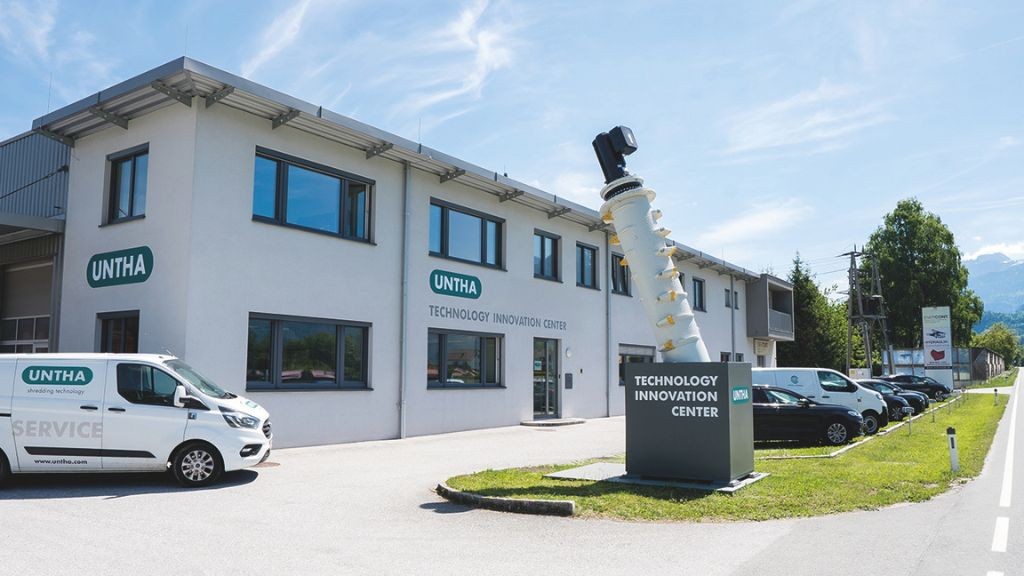UNTHA opens an all-new technology innovation centre – Recycling Product News

UNTHA Technology Innovation Center: Advancing Sustainable Development Goals through Innovation

Introduction to UNTHA’s Commitment to Sustainable Innovation
UNTHA shredders and the company’s success stem from intensive research and development efforts. To further enhance innovation and contribute to the Sustainable Development Goals (SDGs), UNTHA shredding technology GmbH inaugurated the UNTHA Technology Innovation Center (TIC) in Kuchl near Salzburg, Austria. This center consolidates the company’s research department, product digitalization, prototype development, and assembly under one roof, fostering internal collaboration and sustainable technological advancement.
Strategic Location and Facilities Supporting SDG 9: Industry, Innovation, and Infrastructure
The TIC is strategically situated near UNTHA’s headquarters, production, assembly sites, and e-technology division. The facility includes:
- An assembly hall dedicated to prototype construction
- CAD workstations for advanced design and engineering
- A laboratory for testing and quality assurance
- A modular meeting room to encourage cross-departmental collaboration
- Spaces designed for constructive exchange of ideas
Moreover, the TIC spearheads the development of AI-supported applications and smart services, such as the MyUNTHA platform and the UNTHA GENIUS predictive maintenance system, aligning with SDG 9 by promoting sustainable industrial innovation.
Prototyping and Development: Driving Sustainable Solutions
Comprehensive Approach to Sustainable Product Development
UNTHA shredders cater to diverse applications and are often customized to meet specific client needs. The product range includes:
- Smaller machines like the new generation RS series models
- Heavy-duty shredders such as the XR and ZR models, weighing up to 40 tons
The development process integrates three critical variables:
- Mechanics
- Electronics
- Digitalization
This integrated approach supports SDG 12: Responsible Consumption and Production by optimizing product efficiency and sustainability.
Collaborative Innovation and Real-World Testing for SDG 17: Partnerships for the Goals
Employees at the TIC bring extensive expertise and experience to the development of UNTHA shredders. Their collaborative workflow includes:
- Conceptualizing new shredding solutions
- Building and assembling prototypes
- Commissioning and conducting practical tests under real operating conditions with existing clients
These test runs are closely monitored by the development team and technicians. Process data is collected and analyzed using sensitive measurement technology alongside the UNTHA GENIUS assistance system. This data-driven approach enables early identification and implementation of improvements during the prototype phase, enhancing product sustainability and reliability.
Contribution to Sustainable Development Goals
- SDG 9 (Industry, Innovation, and Infrastructure): Through advanced R&D and AI-supported smart services.
- SDG 12 (Responsible Consumption and Production): By optimizing shredding technology for efficiency and adaptability.
- SDG 17 (Partnerships for the Goals): Via collaboration with clients and cross-departmental teamwork to foster innovation.
1. Sustainable Development Goals (SDGs) Addressed or Connected
- SDG 9: Industry, Innovation and Infrastructure
- The article focuses on research, development, innovation, and digitalization in the manufacturing of shredders.
- The establishment of the UNTHA Technology Innovation Center highlights investment in infrastructure and innovation.
- SDG 12: Responsible Consumption and Production
- UNTHA shredders are designed for various applications, potentially including waste management and recycling, which relate to sustainable production and consumption.
- The use of AI-supported apps and predictive maintenance systems can optimize resource use and reduce waste.
- SDG 8: Decent Work and Economic Growth
- The article mentions employment of skilled workers with extensive knowledge and experience, supporting decent work and economic growth.
- Innovation and prototype development contribute to economic development.
2. Specific Targets Under Those SDGs
- SDG 9 Targets
- Target 9.5: Enhance scientific research, upgrade technological capabilities of industrial sectors.
- Target 9.2: Promote inclusive and sustainable industrialization and, by 2030, significantly raise industry’s share of employment and GDP.
- SDG 12 Targets
- Target 12.2: Achieve sustainable management and efficient use of natural resources.
- Target 12.5: Substantially reduce waste generation through prevention, reduction, recycling, and reuse.
- SDG 8 Targets
- Target 8.2: Achieve higher levels of economic productivity through diversification, technological upgrading, and innovation.
- Target 8.5: Achieve full and productive employment and decent work for all.
3. Indicators Mentioned or Implied to Measure Progress
- Indicators for SDG 9
- Research and development expenditure as a proportion of GDP (implied through intensive R&D activities).
- Number of patents or innovations developed (implied by prototype development and AI-supported apps).
- Technological readiness and adoption of digitalization in production processes.
- Indicators for SDG 12
- Waste generation per capita and reduction rates (implied by shredders’ applications in waste management).
- Resource efficiency measured by material input per unit of GDP (implied through optimization via predictive maintenance).
- Indicators for SDG 8
- Employment rate in manufacturing and innovation sectors (implied by skilled workforce at TIC).
- Labor productivity and economic output related to technological innovation.
4. Table: SDGs, Targets and Indicators
| SDGs | Targets | Indicators |
|---|---|---|
| SDG 9: Industry, Innovation and Infrastructure |
|
|
| SDG 12: Responsible Consumption and Production |
|
|
| SDG 8: Decent Work and Economic Growth |
|
|
Source: recyclingproductnews.com








